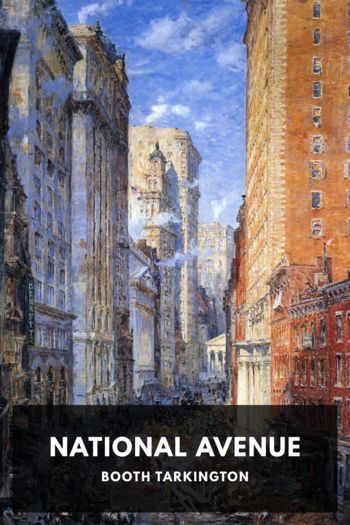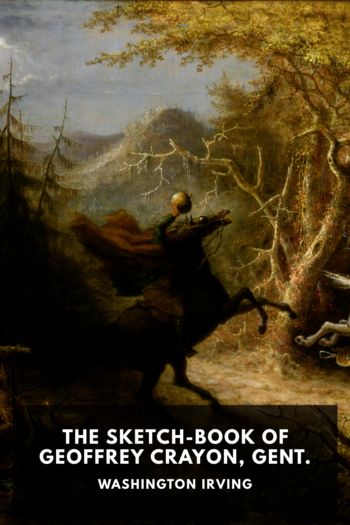Enchanted Evenings:The Broadway Musical from 'Show Boat' to Sondheim and Lloyd Webber by Block, Geoffrey (good story books to read .TXT) 📕

Read free book «Enchanted Evenings:The Broadway Musical from 'Show Boat' to Sondheim and Lloyd Webber by Block, Geoffrey (good story books to read .TXT) 📕» - read online or download for free at americanlibrarybooks.com
Read book online «Enchanted Evenings:The Broadway Musical from 'Show Boat' to Sondheim and Lloyd Webber by Block, Geoffrey (good story books to read .TXT) 📕». Author - Block, Geoffrey
When comparing stage musicals with their literary origins, the chapter on Kiss Me, Kate (chapter 10) will discuss how Sam and Bella Spewack’s original libretto differs from the final Broadway version as well as with Shakespeare’s The Taming of the Shrew, and in the process suggest that Porter may have learned as much from his own Anything Goes as he did from Rodgers and Hammerstein about how to relate music to character. In My Fair Lady (chapter 12) Alan Jay Lerner and Frederick Loewe departed significantly from Shaw’s ending to Pygmalion. After giving the mean-spirited Professor Henry Higgins a more humane face (intentionally denied by Shaw) by the end of act I, the Broadway team, in their second act, made explicit, mainly through the songs, what Shaw implies or omits. Ironically, although they romanticized—and thereby misrepresented—Shaw’s intentions, Lerner and Loewe managed to convey Eliza Doolittle’s metamorphosis as Higgins’s equal, through both Lerner’s lyrics and Loewe’s reversal of their musical roles, more clearly than either Shaw’s play or director Gabriel Pascal’s 1938 film, upon which My Fair Lady was based.
When discussing West Side Story (chapter 13) the point argued is not simply that the Broadway collaboration more closely approximates the spirit of Shakespeare’s Romeo and Juliet than earlier operatic adaptations (or some films) that retain the Bard’s namesakes and setting, but that Bernstein—with considerable help from Sondheim (lyrics), Arthur Laurents (libretto), and Jerome Robbins (choreography and conception)—found a musical solution to convey the dramatic meaning of Shakespeare through the use of leitmotivs and their transformations in combination with a jazz and Hispanic American vernacular.
The present survey will only occasionally emphasize social history. That is another book that very much needs to be written. Nevertheless, the study of a musical most often leads to political and cultural issues, even if it was the expressed intent of its creators to escape from meaning. For many of the musicals discussed in act I especially, the changes that went into their revivals over the decades offer a valuable tool to measure changing social as well as artistic concerns. Some musicals, such as Show Boat, Porgy and Bess, and West Side Story are overtly concerned with racial conflicts; others, such as Anything Goes, On Your Toes, One Touch of Venus, and My Fair Lady, explore class differences. All musicals discussed here either directly or inadvertently make powerful statements about what James Thurber called The War between Men and Women.14
The Cradle Will Rock serves as a worthy representative to show both the wisdom and futility of the didactic political musical. Two songs from this “avant-garde” musical will be discussed from this perspective. The first is “Croon–Spoon,” which satirizes the vapidity of ephemeral popular music, and the second is “Art for Art’s Sake,” which from Marc Blitzstein’s perspective indicts the equally vapid messages of so-called high art, the purposes to which art is used, and the blatant hypocrisy of some artists.
Not surprisingly, few musicals measure up to evolving sensibilities. The disparity between these shows and feminist values will be given special attention in interpreting Anything Goes, Lady in the Dark, One Touch of Venus, Carousel, Kiss Me, Kate, Guys and Dolls, and My Fair Lady, all of which provide gender issues of unusual interest. Some musicals fare better than others from the vantage point of the future, but no musical surveyed here can fully escape the assumptions and collective values of their era.
Why These Musicals?
The present selection makes an effort to include representative musicals from Show Boat to The Phantom of the Opera that pose intriguing critical, analytical, aesthetic, and political issues as well as musicals that engage the enthusiasm of the selector. No attempt was made either to be comprehensive or to discuss only the very most popular musicals of the era, but the lists of “Long Runs” and “The Forty Longest Running Musicals on Broadway” in the online website will provide useful reference points for measuring and interpreting the degree of popularity these musicals enjoyed. Despite the above disclaimer, a few words should be said about the degree to which popularity governed the present selections.
Ten of the fourteen Broadway musicals receiving top billing here (not including those by Sondheim and Andrew Lloyd Webber) were also among the most popular of their respective decades. Show Boat was the third longest running musical of the 1920s, Anything Goes and On Your Toes ranked second and eighth, respectively, among book shows in the 1930s—the two longest running 1930s shows, Hellzapoppin’ and Pins and Needles were revues—and in the 1940s and ’50s Kiss Me, Kate, Carousel, One Touch of Venus, My Fair Lady, Guys and Dolls, West Side Story, and The Most Happy Fella all fall within the top fifteen longest runs. Eight of these musicals are among the top thirty-eight musicals spanning these four decades; three rank among the top nine book shows.15
While one measure of a show’s popularity and its even more important correlate, commercial success, is the length of its initial run, the revivability of a show arguably constitutes a more compelling measure of its success. Many musicals, even blockbusters of their day, never manage to regain their hit status and acquire a place in the Broadway repertory despite rigorous marketing or a lustrous star. For example, despite its many merits, Of Thee I Sing (1931), the longest running book musical of the 1930s and the recipient of the first Pulitzer Prize for drama, has disappeared as a staged work on Broadway after its disappointing seventy-two performance revival in 1952. Two of the musicals under scrutiny





Comments (0)